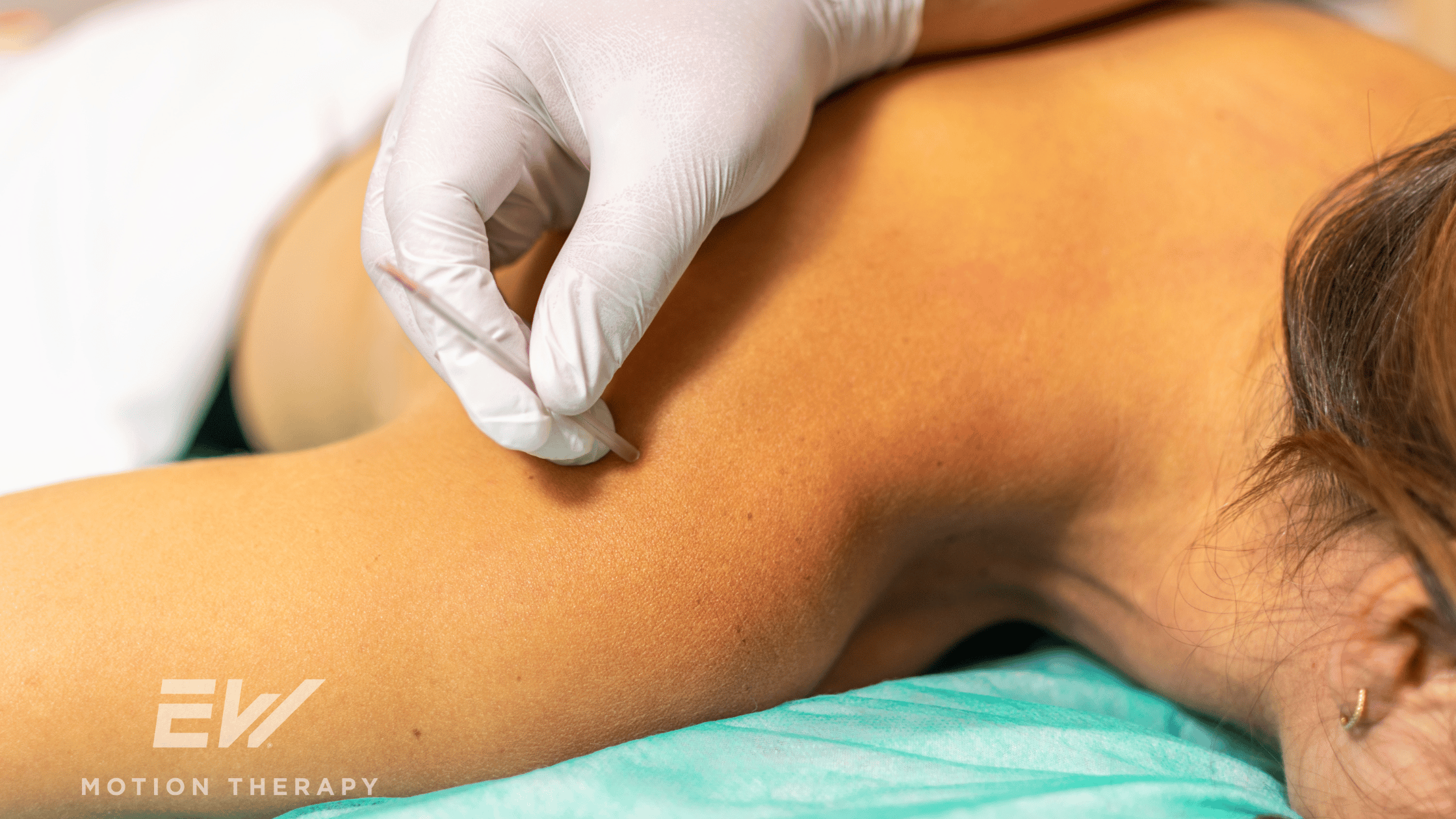Does Dry Needling Hurt? What You Need to Know

Licensed Physical Therapist, PT, MSPT // Certified Dry Needling Specialist / Clinical Director of EW Motion Therapy Hoover
Dry needling has become a popular therapeutic technique in physical therapy, but a common question many potential patients have is, "Does dry needling hurt?" This is a valid concern, as the idea of needles can understandably create anxiety. Pain is indeed subjective, and everyone’s experience with dry needling can differ. However, understanding what to expect can help reduce some of this anxiety. Your physical therapist will do their best to make sure that you are comfortable throughout the entire procedure and will answer all questions you have. We prioritize patient education at EW Motion Therapy, especially when a patient is interested in dry needling. We pull from our own experience in this article, as we explore how people have described the sensation of dry needling, compare it to the pain of an injection, and discuss how physical therapists can prepare and educate patients for the procedure.
What does dry needling feel like?
Dry needling involves inserting a thin, solid, filiform needle into a muscle’s trigger point to relieve pain and improve function. Descriptions of what dry needling feels like can vary widely among patients:
- Initial sensation: Most people report feeling a slight prick as the needle penetrates the skin. This sensation is often likened to a mild pinching or poking feeling. The discomfort at this stage is generally minimal, especially compared to other needle-based procedures.
- During needle insertion: As the needle goes deeper into the muscle, patients might experience a twitch response, which is an involuntary contraction of the muscle. This can feel like a quick, sharp cramp or a brief muscle spasm. Some people describe it as a deep, aching sensation.
- After the procedure: Post-needling soreness is common and typically resembles the feeling of having a bruise or sore muscle. This soreness can last from a few hours to a couple of days, depending on the individual’s sensitivity and the area treated.
Dry needling pain vs. injection pain
One way to think about the potential discomfort of dry needling is by comparing it to the pain of an injection, such as a flu shot or a blood draw. Here are a few distinctions between the two procedures:
- Needle size and type: The needles used in dry needling are much smaller, thin and are solid, as compared to the hollow needles used for injections. This difference often makes the initial insertion of the needle less painful than an injection.
- Injection pain: Injections typically cause a burning or stinging sensation as the medication is pushed into the muscle or bloodstream. Dry needling does not involve injecting any substances, so this type of pain is absent.
- Depth of penetration: While both procedures involve needles penetrating the skin, dry needling often involves deeper insertion into specific muscle trigger points, which can cause a different type of discomfort. However, this discomfort is often short-lived.
Educating and preparing patients for dry needling
A crucial part of reducing anxiety and managing expectations for dry needling involves thorough patient education and preparation. Here’s how physical therapists can help:
Clear communication
Physical therapists should clearly explain the procedure, including its purpose, benefits, and potential sensations, before starting dry needling. Providing detailed information helps clarify the process and reduces fear of the unknown.
Addressing individual concerns
Each patient has unique concerns and pain thresholds. Physical therapists should take the time to listen to these concerns, answer questions, and tailor their explanations to the individual’s needs. This personalized approach can significantly decrease anxiety.
Describing sensations
Describing the expected sensations, such as the initial prick, muscle twitch, and possible soreness, helps set realistic expectations. Therapists may also share common descriptions they have heard from other patients which often results in a better understanding of what to expect.
Relaxation techniques
Encouraging patients to use relaxation techniques before and during the procedure can help reduce discomfort. Deep breathing, mindfulness, and other relaxation methods can make the experience more tolerable.
Aftercare instructions
Providing clear instructions on what the patient may do after dry needling can help manage any post-needling soreness. Suggestions might include gentle stretching, hydration, applying heat or ice, and avoiding strenuous activities for a little while.
Gradual introduction
For particularly anxious patients, a gradual introduction to dry needling might be beneficial. Starting with fewer needles or targeting less sensitive areas can help build confidence and trust in the procedure.
While the question "Does dry needling hurt?" doesn’t have a one-size-fits-all answer due to the subjective nature of pain, understanding what to expect can significantly reduce anxiety. Most patients describe the sensation as a mild prick followed by a deep, aching feeling or muscle twitch, with post-procedure soreness feeling similar to a bruise. Compared to injections, dry needling generally involves less initial pain but can cause deeper muscle sensations.
Physical therapists play a vital role in educating and preparing patients for dry needling. By fostering an education-focused and supportive environment, physical therapists can help patients experience the benefits of dry needling with minimal discomfort, ultimately enhancing their path to recovery and well-being. This is our goal for every patient at EW Motion Therapy, especially our dry needling clients. To learn more about dry needling, click the button below to download our answers to 20 frequently asked questions.


